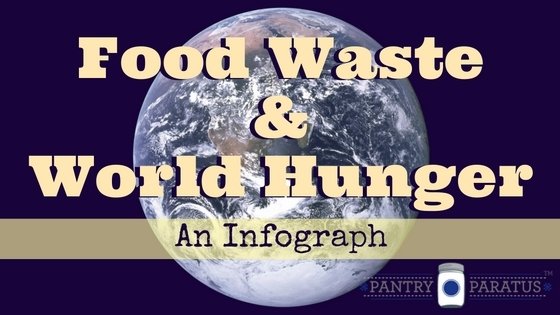
What if I told you that we could completely eradicate world hunger without growing another grain of rice?

What if I told you that we could completely eradicate world hunger without growing another grain of rice?

Food is my business. Not just food—I am not a chef; I can’t make my tiramisu presentable or my own puff pastry dough from scratch—but our (Wilson & my own) passion is in teaching others the importance of knowing where food comes from and how to preserve it for future use.
Maybe you’ve thought some of these:
If you have (and I have), then I would like for you to consider four areas of food ethics. These four things will totally change the way to see–and taste–what’s on your plate.
Continue reading Why Food Matters: Ideology, food ethics, provision, & palette
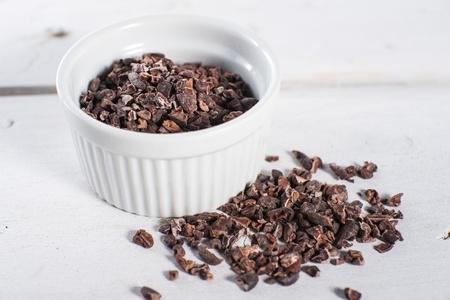
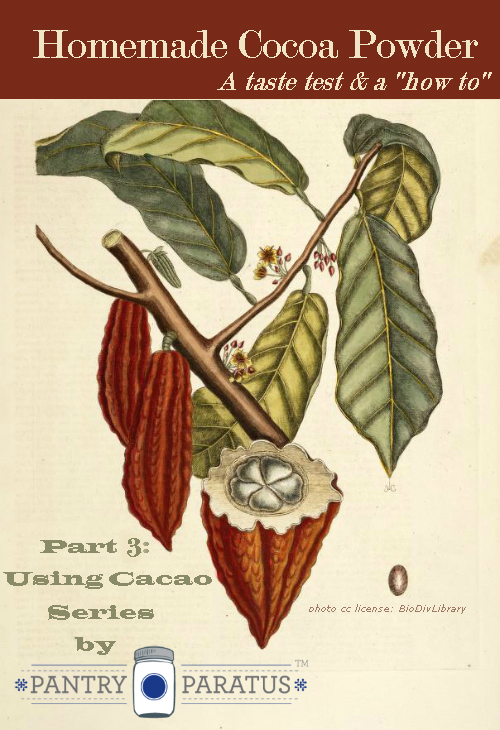
I suffer from high expectations, and since I use chocolate to self-medicate the consequences of that, I decided that I should begin applying my high expectations to the chocolate itself. First, is it ethically produced chocolate? Is it fresh? And then, if I’m getting those two things how on earth can I have it affordable? The answer lay within the nearest bag of organic, fair trade cacao nibs. By purchasing bulk through Pantry Paratus, I am getting a great price. By grinding my own nibs into powder, I am getting the freshest product possible.
Taste Test
I wanted to know if I would really prefer it to the others on the market.
I did a cocoa powder taste test.
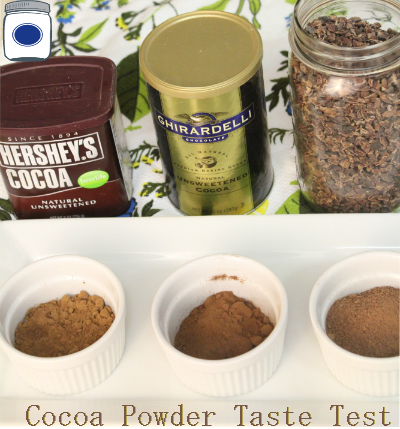
It was hardly a scientific approach. The Hershey’s Powder and the Ghirardelli were in my pantry already. Both were within the expiration dates by a wide margin but I highly doubt I purchased them simultaneously so they are likely differing ages; they were stored properly and in the same conditions.
RESULTS:
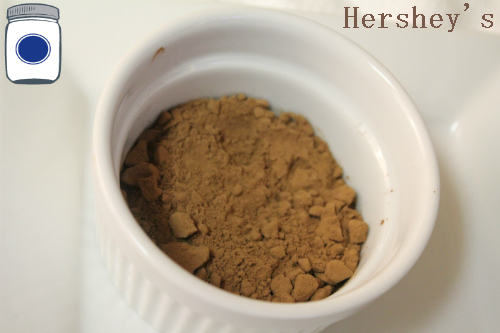
Tired. Bland. Slightly clumpy but a nice powder texture.
That was the Hershey’s. No real complaints but definitely my least favorite. It requires more to get the same chocolatey flavor.
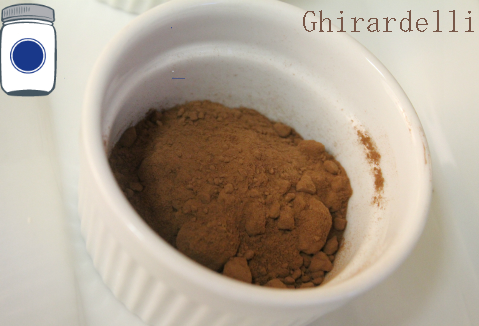
Good flavor, nice powder. But expensive.
Yup, that would be the Ghirardelli’s. Having done a taste-test between it and Hershey’s, I would say that Ghirardelli’s is the better powder by far due to texture and a more potent chocolate flavor. I deliberately did not alter these photos to improve lighting; look at the difference in color between Hershey’s & Ghirardelli’s.
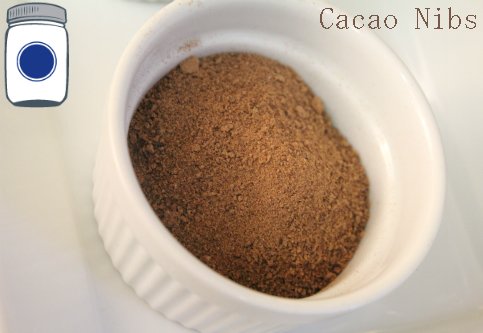
Best value (hands down), freshest flavor, and known origin.
Extra steps and cleaning.
Without a doubt, I really do prefer the home-ground cacao nibs flavor-for-flavor. Other powders remove much of the cacao fat so that it is shelf-stable, but it is where the deep, bitter flavor resides. You are retaining that with cacao nibs, so fewer are needed to get a rich flavor. With Ghirardelli selling for over $18 a lb, I think I’ll take the DIY method with the cacao nibs. I use my coffee grinder so it isn’t really more work, but it is an extra step and the grinder does make one more thing in the dirty-dish pile. Knowing the human trafficking involved in the chocolate industry, though, it feels extremely selfish to voice the “ugh, a dirty dish to feed my gluttonous indulgence for chocolate” complaint outloud. <yup, erased and re-wrote the last paragraph twice—don’t want to sound like a horrible person OR like a self-righteous one. It’s the chocolate talking. >
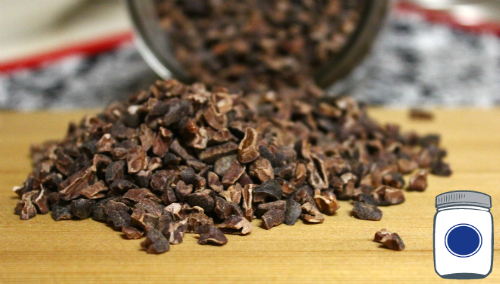
How To Grind Cacao Nibs
The high level of fat in the nibs means that you should never use an electric grain mill. Use either a solid and trustworthy food processor, a hand-crank grain mill with the stainless steel burrs, or a coffee grinder. You will make your appliance earn its spot on the counter with this job, though, so be sure it is a tough one. You will have to grind it several times. It may never come out with the fine powder to which you are accustomed (shelf-stable powder also have a lot of the cacao fat removed), but the right appliance and multiple grindings can do it. As you grind, you may need to pause and remove the gummy cacao fat (“liquor”) on the bottom of the grinder several times. Store your powder in an air-tight container in the freezer for maximum shelf-life. Remember that there is a high percentage of fat in that powder and it will go rancid. Ideally, only grind what you plan to use within the week.
I’m done buying the store-bought stuff when fresh, full-flavored cocoa powder can be made so quickly, ethically, and affordably. If you would like to pick up a 1 pound bag of cacao nibs for a great price, get them here with Pantry Paratus.
Humbly signing off to go wash dishes,
Chaya
Did you miss the other articles in the Using Cacao Series?
Part 1: Is Cocoa Powder and Cacao Powder the Same Thing?
Part 2: Chocolate By Any Other Name (Chocolate Defined)
All Photos are property of Pantry Paratus. Feel free to share or pin them in conjunction with this blog, but please keep proper attribution. Thanks in advance.
Looking At The Label: Palm Oil
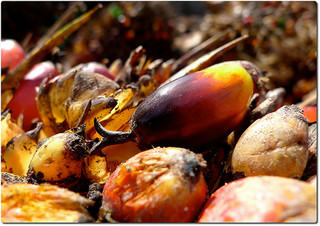
You are casually strolling through the grocery store aisle and you flip a package to the list. There it is, palm oil. In your quest for healthy foods and traditional eating, can you partake with a clear conscience? Chances are, you used something with palm oil in it today (it has approximately 30 names, you know).
This blog is at the intersection of nutrition and sustainability.
Palm Oil and Health
I first refer to Sally Fallon Morell’s definitive work, “Nourishing Traditions” when I have a question as to the health of a particular food item. She mentions palm oil (p.20) as a tropical oil that is high in lauric acid. That is a good thing because it is a fatty acid, found in large quantities in mother’s milk and coconut oil, that has antifungal and antimicrobial properties. In fact, Sally Fallon Morell suggests that traditional populations in tropical areas have been nourished and healthy because of things like these tropical oils. She does also specify that red palm oil is strong and not as popular in America as it is in Africa; but that the odorless and tasteless clarified version can be used as shortening.
Palm oil is a natural ingredient. Your body can digest it. Your skin can absorb it. It is “all natural” and even “organic” sometimes. According to an Australian website (so not sure if this holds true in the U.S.), it is in 50% of all storebought products including baked goods, confectionary foods, hygiene products, and cleaning supplies.
Palm Oil On The Label

It appears that the usage of palm oil in the industrial food setting gave way to the hydrogentated crap bad stuff we most often see on the label. It does seem to me (anecdotally, mind you) that palm oil is making a comeback. Maybe it is not just anecdote; the Rainforest Action Network claims that the importation of palm oil to the United States has increased 485% in the last decade (“The Case Against Palm Oil: A Factsheet”).
Does the label say “vegetable oil”? According to FoodNavigator.com , ½ of all of the world’s vegetable oil consists of palm oil. Since it goes by 30+ names, it is nearly as difficult to eliminate from your diet and skincare routine as corn.
The Auckland Zoo has a great “Buy Palm Oil Free Shopping Guide”, but it is Australian based and it took forever to download through my internet access. Still, it is worth a read. This is what I learned:
Do those names look familiar to you?
Is Palm Oil Ethical?
Only 4% of the world’s palm oil is produced in a sustainable manner. Some of that is even questionable. The Auckland, New Zealand zoo says that there is no such thing as “sustainable” palm oil.

If it is not sustainable, then that means the ability to grow it is diminishing. What are the practical realities? Loss of viable palm trees, loss of natural habitat, loss of animal life. The leading cause of deforestation in Malaysia is the creation of palm oil plantations. Over 50 orangutans die every week, and there are as few as 500 Sumatran tigers and 3000 Sumatran elephants left in the wild (“Palm Oil Action”). There are also land grabs, human rights abuses , and even private militias.
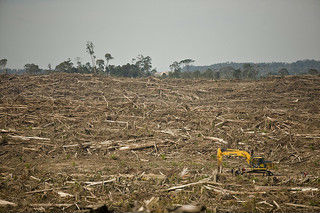
“Yeah, but that is somewhere else.” What is the landscape of your home, what animal songs greet you in the morning when you step outside, and how would your local economy, agriculture, and life be radically altered if it were all bull-dozed? The temptation is to ignore this. I think we know better.
In my research of palm oil, I found that propaganda was thick on every side. I really want to give you a clear picture of this, but I am not sure that I can. I know that this is a hot button in Australia and New Zealand; there is a silence in the U.S. media.
Watch this:
Healthy, yes. Traditional, sure. But sustainable?
My Conclusion:
I know how allusive this particular item will be to remove from my home and so I doubt I will succeed completely. Just the same, I am responsible for my knowledge and for my stewardship of the earth. That means I am obligated to try.
Let’s flourish (& help less fortunate parts of the world do the same),
Chaya
Sources:
The sources hyperlinked in the text are not listed below.
“Palm Oil Action .” PalmOilAction.org. Palm Oil Action Group, n. d. Web. 2 Aug. 2013. <http://www.palmoilaction.org.au/>.
“The Case Against Palm Oil: A Fact Sheet.” RAN.org. N.p.. Web. 2 Aug 2013. <http://ran.org/sites/default/files/po_factsheet.pdf>.
Photos:
Palm Fruit: Swamibu via photopin cc
How I feel after label reading: TheeErin via photopin cc
Orangutans: Russell Watkins via photopin cc
Rainforest Destruction: Rainforest Action Network via photopin cc
Proviso:
Nothing in this blog constitutes medical advice. You should consult your own physician before making any dietary changes. Statements in this blog may or may not be congruent with current USDA or FDA guidance.
/pspan style=